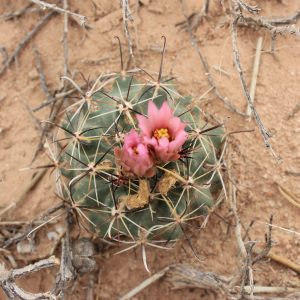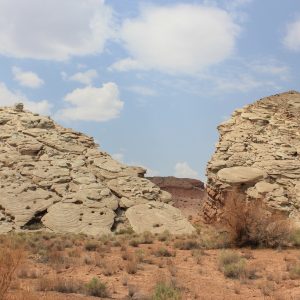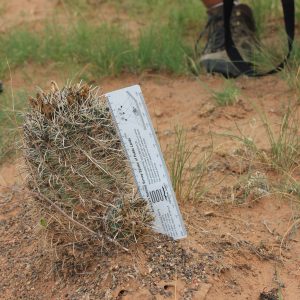While camping a few weekends ago, I was asked by another camper where I lived and I replied, “Richfield, Utah.” They immediately shot back, “Why?” That pretty much sums up most people’s perspective of the agricultural town containing about 7,500 people. But there’s a detailed answer to that question.
Most people know Utah for its homogeneous culture and lack of good beer. Utah is also famous for its sandy canyons and stretching desert. Intrigued by the words of Edward Abbey, one of the reasons I accepted this internship in Richfield was to experience the mystery and enchantment of the tablelands he experienced and wrote about. Watching the sunrise from our field sites, some of which are dubbed badlands for their lack of resources but possessing jaw-dropping beauty, I can’t help but feel fortunate.
My internship is divided into two parts; working with an endangered cactus species, Sclerocactus wrightiae (my love for succulents being another reason for accepting this position) and Seeds of Success.
Our typical day in the field involves revisiting known Sclerocactus localities and monitoring for cactus survival, including recording number of cactus found, size, geographic information, and several other variables to fully grasp the cactus habitat and environmental impact. In the office, we spend time analyzing the large amount of data. This extensive study is successfully helping to ensure the survival of Sclerocactus wrightiae as well as keep BLM land monitored for multi-use purposes. Fortunately, the recent rains have perked up the cactus and provided quite an advantage at finding S. wrightiae! Although the dry spring in Utah did not pan out in our favor for collecting seed, as we drive throughout Utah our eyes are frequently peeled for large groups of plants that will potientially produce at least 10,000 seeds. There are some promising sites and we have collected vouchers. The seed is so close to being ready! I am looking forward to honing my plant identification skills and being able to recognize new plant species! If I haven’t mentioned it enough, again, I feel so fortunate that I am getting paid to play outside and contribute to environmental consciousness!
-

-







